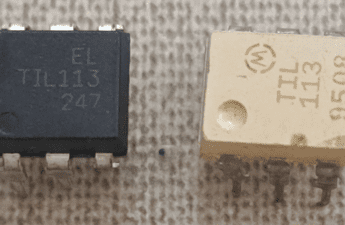Circuit bridges are electronic circuits used in the measure of passive components (resistors, inductors and capacitors). In this post, will be seen the existing bridges and how to assemble.
Wheatstone bridge
The circuit of highlighted figure. This bridge can measure the resistance of a resistor.

The bridge will be in balance, when the difference of potential between the point B and the negative side of DC source is equal the difference potential between the point A and the source’s negative pole. In other words, when the voltage in point B is equal to the voltage in point A, the bridge will be balanced. In this condition the relation between the resistors is:
\frac{R1}{R3}=\frac{R2}{Rx}
Knowing the values of R1, R2 and R3, it is possible to know the value of Rx.
Kelvin or Thomson bridge
This is a modification of Wheatstone bridge. Used to measure very small resistances, with values lower than 1Ω.
 R1 must be equal to R3 and R2 equal to R4, the balance condition is:
R1 must be equal to R3 and R2 equal to R4, the balance condition is:
\frac{Rx}{Ro}=\frac{R4}{R3}
Rx and Ro must have low values, Ro is an arbitrary value and Rx is the value to be measured.
Sauty bridge
Now I will show the circuit bridges which measure capacitance. This bridge serves to measure the capacitance. Note that this bridge uses a AC source. Cx is the capacitor to be measured and Co is the reference capacitor.
 The balance condition is:
The balance condition is:
\frac{R1}{R2}=\frac{Xc}{Xo}
Xc and Xo are capacitive reactances of Cx and Co respectively. Click in the button below to know how to calculate reactance.
Resistance, Capacitance, Inductance, Impedance e ReactanceClick here
Schering bridge
This bridge allow the capacitance measure of Cx with more precision, because the capacitor leakage resistance (Rx) can be balanced with resistor R2 in parallel to capacitor C2.
 The balance conditions are:
The balance conditions are:
\frac{Cx}{C1}=\frac{R1}{R2}
\frac{Rx}{R1}=\frac{C2}{C1}
Wien bridge
In opposition to Sauty and Schering bridges, the Wien bridge depends on the AC frequency source to obtain the balance.

This is the balance condition, where f is the frequency.
2\pi f=\frac{1}{\sqrt{RxR2CxC2}}
Maxwell bridge
The three following bridges measure the inductance. The Maxwell bridge compare an inductive reactance with a capacitive reactance.
 The balance conditions are:
The balance conditions are:
RxR1=R2R3
Lx=CR2R3
Hays bridge
This is the Hays bridge circuit and your balance conditions respectively. Have the same principle of Maxwell bridge.

Lx\cdot (1+\omega ^2 R1^2 C1^2)=R2\cdot R3\cdot C1
R3\cdot (1+\omega ^2R1^2C1^2)= \omega ^2 C1^2 R1\cdot R2\cdot R3
\omega =2\pi f
Owen bridge
This source doesn`t depend on signal frequency to get the balance.
 Balance conditions.
Balance conditions.
R3=R2\frac{C1}{C2}
L3=C1R2R4



